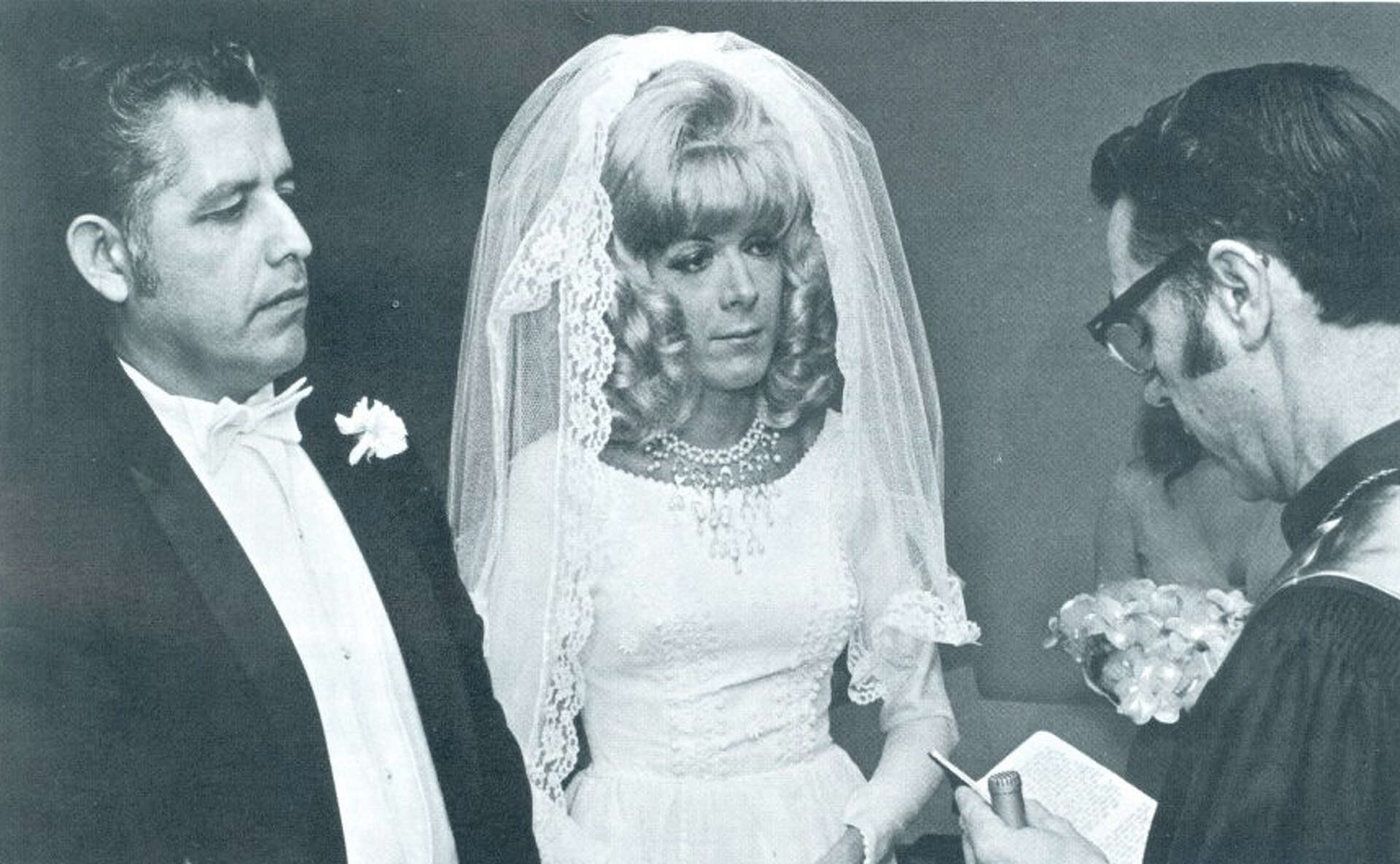More than 40 years ago in a small chapel off the Gulf Freeway, a hulking ex-tackle from Brownsville slid a ring onto the finger of his partner, transforming the slight man wearing a blond bouffant wig standing opposite him into his husband. In their hands they clasped the first marriage license ever given to a same-sex couple in Texas.
The story of Antonio Molina and William “Billie” Ert is full of firsts. It marked Texas’ first gay marriage and the first recorded instance of a same-sex couple receiving a license to wed in the Lone Star State. It was also stained by finality, a quixotic love story that set back the Texas gay marriage movement 40 years while also helping to inspire a generation of civil rights advocates.
By 1970s standards, Molina and Ert’s story went viral, making front-page headlines from El Paso to East Asia. “Two men seal vows with a kiss,” the Denton Record-Chronicle reported on Oct. 6, 1972. The Straits Times of Singapore’s headline read, “And then they were wed … HE to HIM.”
Molina’s hometown newspaper, the Brownsville Herald, ran a photo of the beaming couple holding their marriage certificate, he in a suit and tie and Ert in a white beaded dress, elbow gloves and wig. That wig, it turns out, was what separated their success from the handful of gay couples who already had attempted to get married.
“We wouldn’t have issued any license if we’d known he wasn’t a female,” Wharton County Clerk Delfin Marek said at the time. His deputy said Ert’s “frosted shoulder length wig” fooled her.
[…]
The couple had been together for a number of years when they exchanged rings in a small ceremony at Houston’s Harmony Wedding Chapel, Rev. Richard Vincent, who officiated the ceremony, told The Advocate two days after their wedding.
“We marry souls, not bodies,” said Vincent, an activist minister who helped found the gay-friendly Dallas Metropolitan Community Church. “They met the requirements as set forth by the church; they love each other, and they had a license, as I signed it. As far as I’m concerned, they are married in the eyes of God and in the eyes of Texas.”
The timing of the marriage was perfect for homosexual activists.
The U.S. Supreme Court was poised to hear the case of another gay couple who sought and failed to receive a license in Minnesota, Jack Baker and James McConnell. While awaiting on the High Court to rule, Baker and McConnell quietly went to another Minnesota county, obtained a license and were married in 1971.
By the time Molina and Ert tied the knot, a handful of other same-sex couples from Washington State to Kentucky had tried unsuccessfully to follow in Baker and McConnell’s footsteps. The nascent gay rights movement, born in the wake of a police raid on a Greenwich Village gay club known as the Stonewall Inn, seemed poised for a breakthrough.
The public and the courts, however, were not ready.
“When Antonio and Billie tried to marry, the medical profession considered homosexuality a mental illness. Most states, including Texas, criminalized it, and there were no legal protections for gays and lesbians anywhere,” said Mark Phariss, who currently is challenging Texas’ gay marriage ban with his partner, Victor Holmes.
Read the whole thing, it’s worth your time. I had no idea about any of this. Kudos to Chron reporter Lauren McGaughey for digging it all up. In 1973, the Legislature closed this loophole in the law by changing the wording that allowed “any two persons” to get married to “a man and a woman”; the Lege made another change in 1997 to make this more explicit, and then of course there was that awful constitutional amendment of 2005, which I call the Double Secret Anti-Gay Marriage amendment since it made illegal something that was already illegal. Now of course we have a judge’s ruling against said amendment, and a motion to lift the stay on that ruling, which would allow modern couples to formally and officially do what Molina and Ert wanted to do all those years ago. I’d love to know what those two thought about all this, but Molina died in 1991, and Ert could not be found. We’ll just have to leave that part to our imaginations, but there is this to guide us:
Ert and Molina had no way to know what, if any, effect their actions could have on future same-sex couples. In a letter to the gay publication DAVID 41 years ago, however, Ert echoed the hopes and arguments of today’s same-sex marriage advocates.
“This is 1973 and not 1956,” Ert wrote. “I see no reason why the gay community should have to hide behind closed doors to live and love who they wish, be them two females or two males. The U.S.A. is the Land of the Free, so they say, and tell us.”
Thankfully, it’s not 1973 any more, either. Wherever you are, Antonio Molina and Billie Ert, I hope you’re happier now. Swamplot has more.

